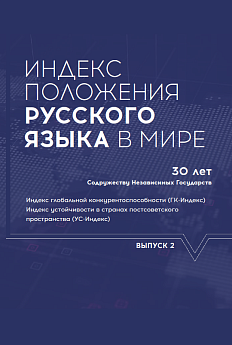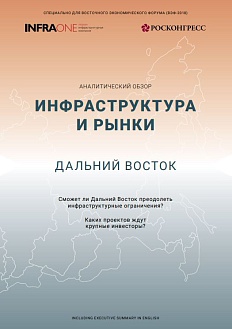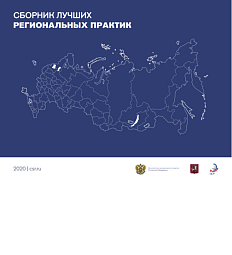What is the main benefit produced by a small provincial city in the heart of rural Russia? It is an unusual question, one you cant really answer off the top of your head. Once, in one of these one-factory towns, the aforementioned one factory realized that this main benefit was their residents free time. They sensed that free time wasted was the arch enemy of efficacy, efficiency, and engagement a person comes to work and just becomes a faceless employee. Having looked at the problem from this point of view, the company came to a unique solution: it launched a town festival dedicated to modern art, where residents were the most active participants.
Is this a social project? Is it cost-intensive? The answer to both those questions is, unequivocally, yes. But at the same time, this project is an inextricable part of the companys business agenda. Foreign research (unfortunately, none has yet been conducted in Russia) has long since shown that employees care about the social mission of their employers. They are far more interested in working for companies with such a mission, proud to call themselves a part of that team, and are more engaged and, in the long run, productive in their work. Modern businesses can no longer afford to ignore this fact.
The Art Ovrag modern art festival made the little town of Vyksa a major centre of modern art. The project won numerous awards. Most importantly, it proved that, today, leading Russian businesses do not see social responsibility as a chore, fashion statement, or PR opportunity. They use social responsibility as a smart and advantageous business decision. But the path leading to this conclusion was far from straightforward.
Business evolution
The end of the last century was marked by globalization and radical market transformations. Since then, change has continued to accelerate, becoming a new form of stability. The companies that are able to adapt, radically transforming their relationships with consumers and employees, are the ones that survive. They move from selling goods to selling a way of life, from selling services to building longterm relationships. From selling relationships, to selling values. And the consumer answers in kind.
In a survey of 10,000 consumers in the worlds ten largest countries by GDP, Allegis Group found that 94% of consumers prefer goods from socially responsible brands that, for example, help develop small businesses in African villages, plant forests, or combat global warming. Employees are no longer
considered a mere resource that produce results in return for a pay check. The share of team and individual contributions to overall results has more than doubled in the last 10 years, while managerial input has fallen by more than a third. According to the CEO of the Russian branch of a large global company, 15 years ago, he simply pinned orders to corkboards and had not even considered that employees could be talked to, that you could build relationships with them, and so on. Today, maintaining a dialogue with employees is an executive priority. Both consumers and employees are stakeholders that a business depends on in a direct and obvious way. In the last decade, the number of stakeholders that businesses must build relationships with has multiplied.
Elena Feoktistova, Managing Director of Corporate Responsibility, Sustainable Development and Social Entrepreneurship Directorate, Russian Union of Industrialists and Entrepreneurs (RSPP)
If a business is a major player, influencing all parts of national life, it is crucial to know how stable it is, what its strategies are, and what the associated costs to society are. A public nonfinancial report forces companies to systematically interact with involved parties, take their expectations into consideration, and support balanced interests. Today many of the largest corporations use this instrument.
This issue was added to the global agenda in 1999, when the UN launched an unprecedented initiative, a corporate sustainability framework known as the Global Compact. It became clear that, in return for being granted the right to earn money, society expected businesses to reign in their rapacious tendencies. Anyone who did not get with the programme quickly figured out that irresponsible behaviour could end in pain. One international petroleum company became telling proof thereof when it started mistreating the environment in a certain African country. Their losses were in the billions of dollars.
The company quickly learned their lesson and has since then become the model of responsible behaviour. This lesson was proof that nonfinancial risks are not just theoretical flights of fancy. Ignoring them could hit where it really hurt, resulting in significant financial losses. The far cheaper alternative is prevention.
In this way, the conversation turned to mutual benefit, essentially boiling down to sustainable business development. Which is of primary interest to
investors. In the eyes of investors, historical financial success was old news. It meant nothing in the face of new, nonfinancial risks. Investors wanted to be certain that nothing like that would happen in the future. One of the Global Compact requirements was transparency: companies must share nonfinancial information in accordance with special standards: The Global Reporting Initiative and the AA1000, data verification standards.
This is where society and business could intersect. Society got what it wanted, and so did business. By focusing on sustainable development, identifying and controlling for nonfinancial risks, and releasing honest reports, businesses present valuable information to investors and convince them of their sustainability. The movement also included numerous international stock exchanges, which gradually required issuers to publish reports on sustainable development. In the future, the movement would be joined by many European governments, who passed relevant legislation. In this way, the movement started to take on a new, mandatory shape and the characteristics of a large industry, with its ever-present consultants for the preparation and verification of reports, the rating thereof, and so on and so forth.

Last year, volunteers collected 56 tonnes of goods for the needy as part of the Products to Help project
A new playerIn Russia, the first members of the movement were public companies trading abroad. However, anything that was legally required but did not seem to be advantageous to the business itself was done superficially, or just imitated. Companies signed the UN Global Compact, published social reports, but did not really consider the concept of sustainable development. Which is far more than just a report. First of all, it requires establishing sustainable development goals (SDGs) and managing the company in accordance with these goals, identifying key stakeholders (interested parties influencing or being influenced by the business) and the risks associated with them, and establishing a legitimate dialogue.

The provincial Vyksa has become one of the centres of contemporary art thanks to the Art-Ovrag Festival under the auspices of the United Metallurgical Company. A factory mural by artist Misha Most covering an area of 10,000 square metres is recognized as the largest monumental wall painting in the world
A report is just the tip of the iceberg. Moreover, for the longest time, companies simply equated social responsibility to philanthropy, a type of tax, which bought you the right to do business. However, on the sustainable development scale, philanthropy ranks far lower than building new water treatment plants, and philanthropy can in no way excuse the poisoning of rivers or the dumping of unprocessed waste.Now, Russia is ready to start legislatively regulating this sphere. But the state took quite a lot of convincing before finally took a stand. For years, supporters, including the Russian Union of Industrialists and Entrepreneurs, had led the push for this agenda, convincing businesses that the SDG lifestyle and nonfinancial risk management are advantageous. For almost 15 years, within the Ministry of Economic Development, an interagency working group composed of 36 experts toiled over a unified framework for the development of corporate non-financial reporting and corresponding draft legislation.
And now, their work is done. Last April, Vladimir Putin pronounced these historic words at a State Council meeting: «It is clear that profit is the main priority for a business, but it should not be gained at any price. You know why I am talking about this today and why responsibility of business to the people and society is so important. [...] They should not be timeservers that are only worried about their own prosperity. [...] I believe the business community understands just how important its contribution to a breakthrough in national development is. We cannot afford to waste any time.»
From this moment, it became clear that businesses are expected to become a genuine part of the countrys social agenda. Nonfinancial reporting will gradually become mandatory, starting in 2019 and 2020. Increasing transparency is an effective way to motivate businesses to become more responsible. What is more, all of this is happening at the right time. We have already seen the appearance of leaders in capitalist labour who have acknowledged the direct link between social investment and employee engagement and efficacy, between establishing harmonious relations with local communities and authorities and risk management. It is worth noting that the situation has not homogenized yet. There are those who structure their social agenda according to the principle: if the government asks for it, will give it to them. Certainly, a proactive position is far more advantageous: one where businesses systematically structure their activity and social policies based on key corporate values, closely cooperate with executive bodies, local communities, and other interested parties, and act as a leader or a full partner in these interactions.
The volunteer is a companys soul
One respectable factory was preparing to celebrate its centennial. During preparations, managers argued most of all over what gifts to give employees, what ads to run, and who to invite to their concert. After all, you cant do without gifts and a concert. They crunched the numbers and teared up. And then they got an idea that, at first, sounded fanciful. What if employee volunteers were responsible for coming up with and organizing the main activities in the factory and across the city? What if, instead of waiting for gifts, the employees were able to hand them out? To their colleagues, to the city. That is how that centennial year started off with the 100 Years 100 Good Deeds volunteer marathon. These acts were so impactful and unusual that advertising was practically unnecessary.
Activists named the heretofore unnamed streets of the factory (the Native Streets Project), organized a Healthy Cycling festival, composed a new anthem, recorded a rap version of it, and organized a flash mob to the anthem in the city. The most important thing was that the employees were happy. By sharing part of themselves, they then infected their colleagues with this emotion. All because values were an important part of employees lives, especially for the younger generation.

It is no accident that corporate volunteerism has become a major type of social investment. This is that human energy, that expenditure of time and effort, that commonly resonates with the people being helped far more than just material goods. Moreover, the volunteers become brand ambassadors, replacing entire advertising campaigns. The most forward-thinking employers develop internal volunteerism, when volunteers have the right to organize their own teams, independently come up with ideas and
focal points for their creative efforts, including within the workplace. Here, there are no limitations, aside from a common ideology, on the nature of the good deeds, expert support in training volunteers, or creative support for their projects. This approach is also incredible for HR, since now employees are revealing qualities that neither they nor their managers imagined they had they become active, start taking initiative, pose ideas, and lead, becoming the foundation for serious changes within the company. In this way, one of the teams decided to encourage green thinking among their co-workers. They did this boldly and merrily, painting sidewalks within the enterprise with calls to environmental action, organizing environmental lessons in schools, and holding events to support the recycling of plastic lids.
Enthusiasts ideas can turn into an entire movement, as, for example, the Healthy Cycling festival did. A different volunteer team focused on corporate values and became the driving force behind the values promotion.
Sometimes, companies offer their employees the opportunity to become part of a general programme that helps both them and others. Currently popular are sports marathons or sports programmes, when employees run or get active, earning miles or points, which the company then converts into philanthropy. The job of engagement professionals is to invisibly shepherd employees in the right direction, improving the quality of their ideas, projects, and skills. After all, in some sense, volunteer is a type of profession.

The health route 10,000 steps is the number recommended by the World Health Organization per day
The results of corporate volunteerism are so convincing that some companies are already providing their employees with several paid days for volunteer activities. Research has shown that volunteerism is a far more effective replacement for team building sessions and significantly reduces the costs associated with reaching these goals. Today, when many companies are being forced to shrink internal programmes, volunteerism is a great solution: you have got minimal expenses, but noticeable effects.Those missing picture
It is clear that this new legislation mandating companies to share nonfinancial information and motivating them to foster social responsibility is coming into effect in an already fertile environment. Essentially, the state policy is just establishing best practices. And everyone who has not gotten the picture yet will be forced to get with the programme quickly.






